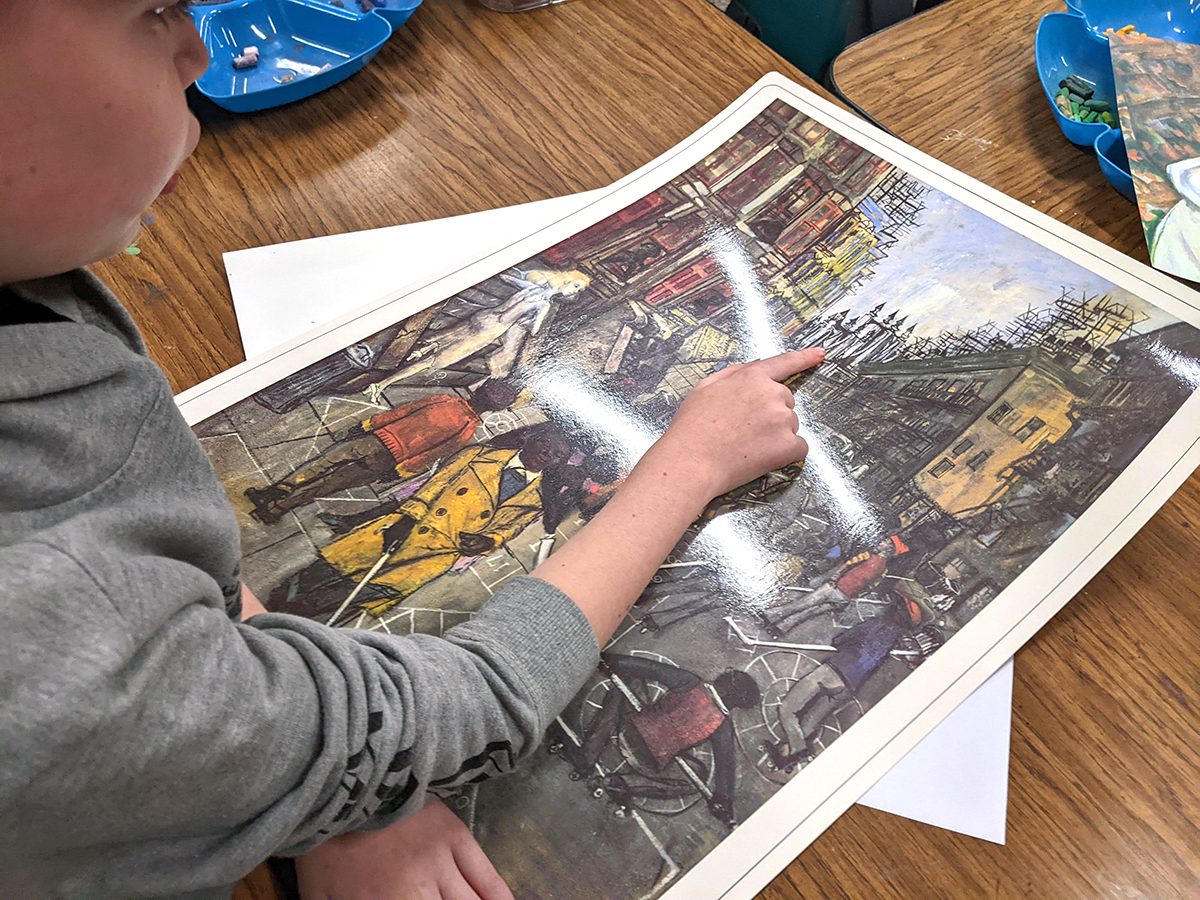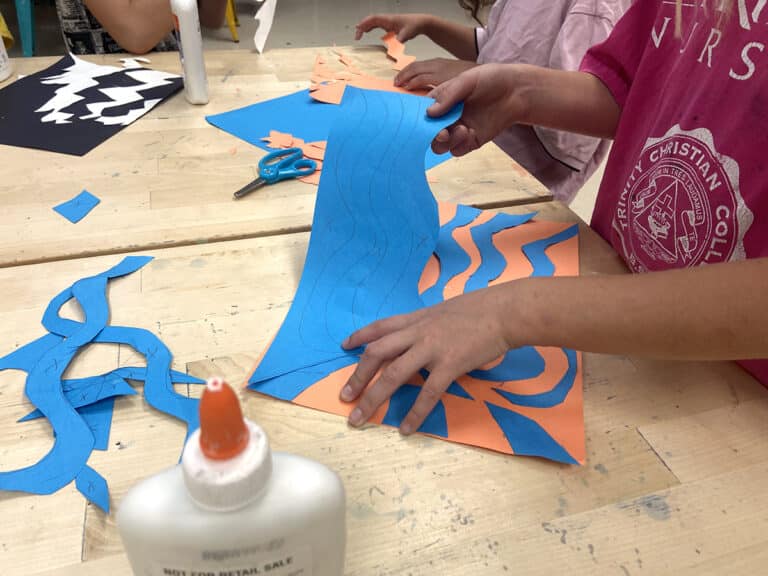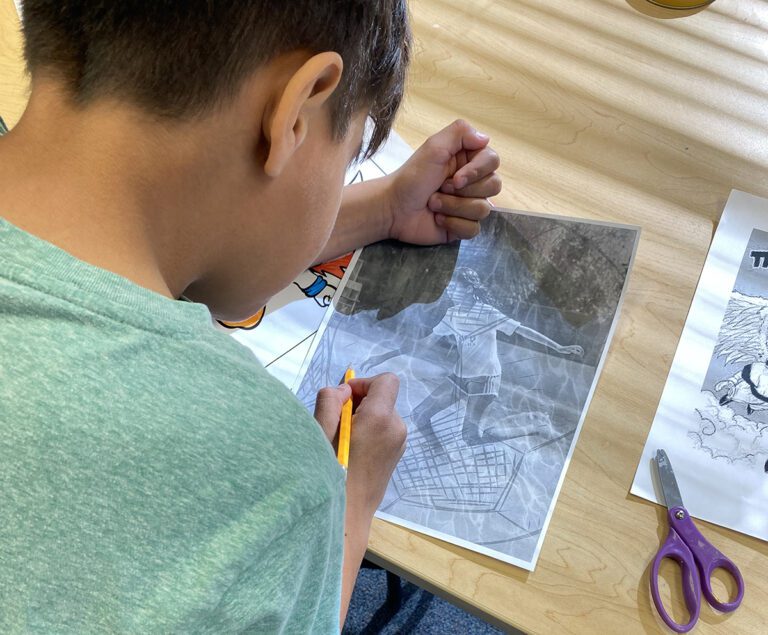Throughout history, people and civilizations have created narrative art to tell stories. The ability to read images and find meaning is an important skill. Understanding narrative art can inspire your students to tell their own stories in their artwork. However, deciphering detailed art pieces can be overwhelming for elementary school students. This art activity is an easy introduction to reading artwork and finding meaning in art. Students will improve their creativity, critical thinking, and visual literacy skills.
Make artwork come alive by “jumping into a painting!” Here’s how to do it with your students.
This activity requires nothing more than paper, a pencil, and a way to display artwork. To begin, display a selected artwork in your classroom for your students to observe.
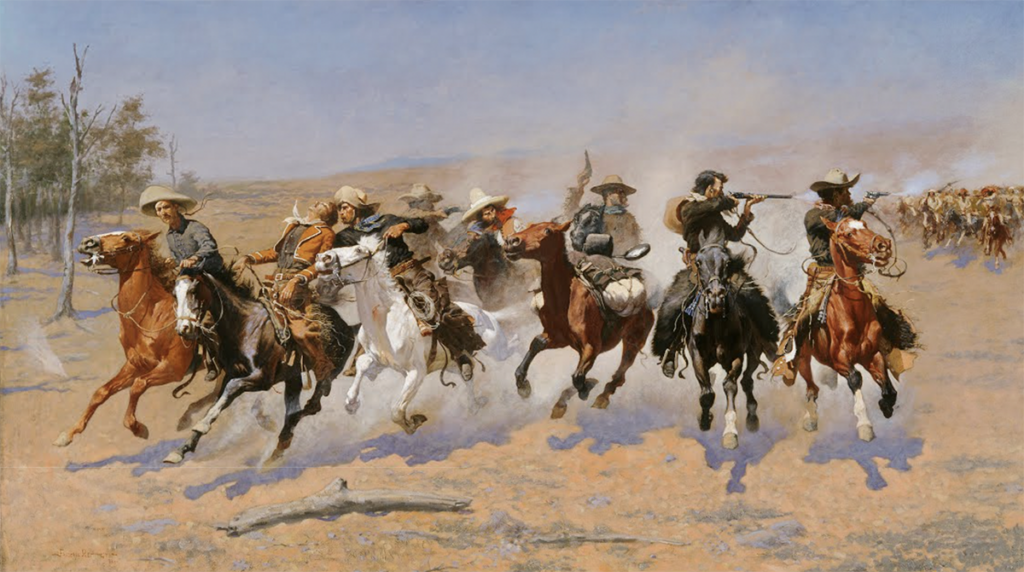
Here are three examples of beginner paintings your students can observe:
- A Dash for the Timber by Frederic Remington
- Untitled (Self-portrait with thorn necklace and hummingbird) by Frida Kahlo
- The Great Wave off Kanagawa by Hokusai
Here are three examples of intermediate paintings your students can observe:
- Oath of the Horatii by Jacques-Louis David
- The Persistence of Memory by Salvador Dali
- Breezing Up (A Fair Wind) by Winslow Homer
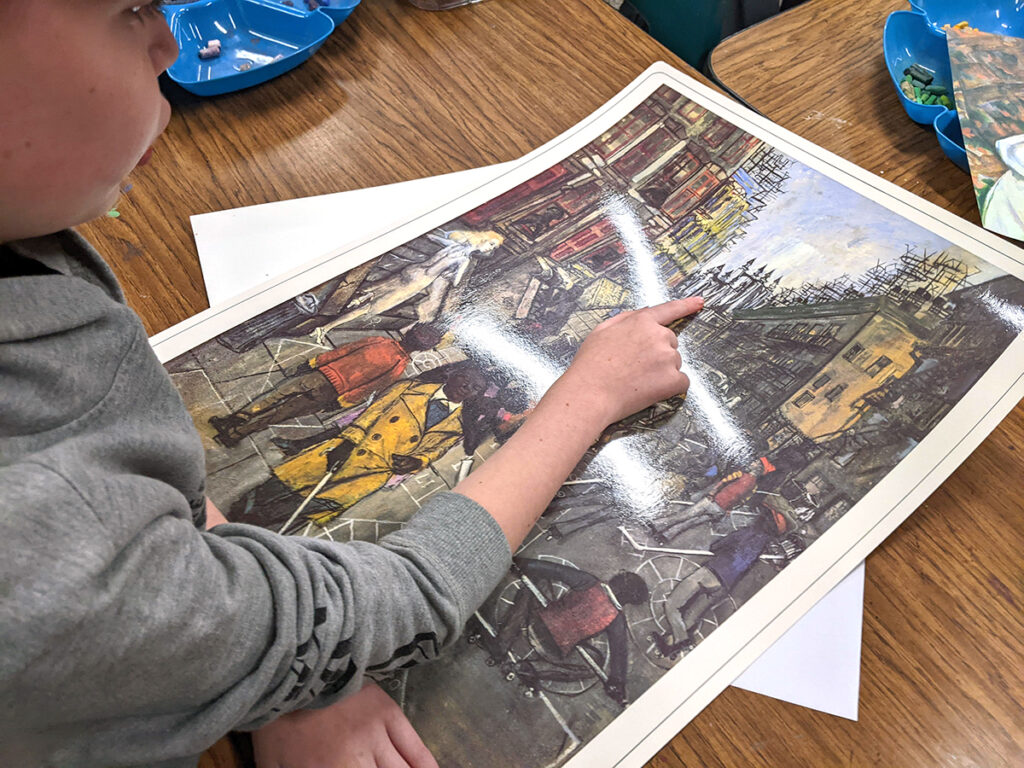
Next, have your students address the five senses:
1. Sight
- What do you see in the artwork?
- I see a…
- Start with the large people, places, and things, then move to the smaller details.
2. Sound
- If you are standing in this painting, what do you hear?
- Who or what is making the noise?
3. Smell
- If you are standing in this artwork, what do you smell?
4. Taste
- What food do you see?
- Who is eating what?
- What do you think it tastes like?
5. Touch
- If you are standing in this artwork, what can you touch?
- What does it feel like?
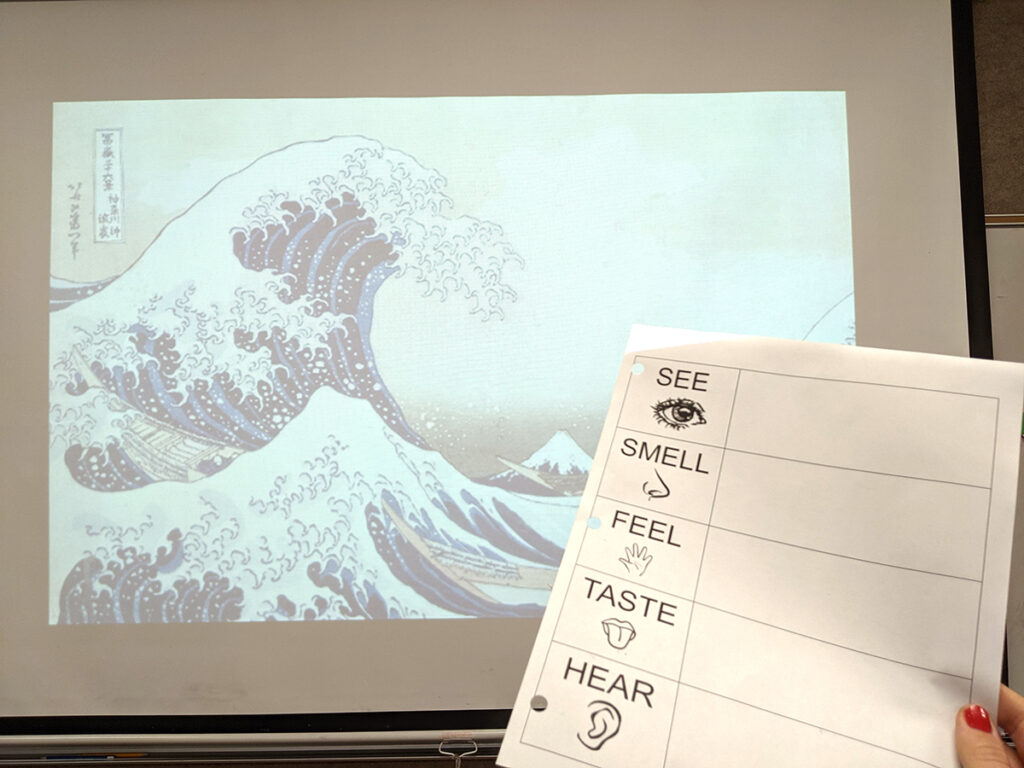
Let’s go through this process together and observe The Great Wave off Kanagawa by Hokusai.
1. Sight
I see a giant breaking wave. The wave looks like it has claws of sea foam. The wave is dark blue, making the water look really deep. I see three long boats with people in them. The people are small and are all wearing blue like the ocean. There is a mountain in the distance. I see a sad, calm, gray sky.
2. Sound
I can hear the thundering sound of the wave breaking in the ocean. I can hear the people yelling to each other, “Watch out!”
3. Smell
I can smell the salty air of the ocean.
4. Taste
I can taste the salty spray of seawater.
5. Touch
I can touch the cold, wet ocean water. I feel the wooden planks of the boat being rocked by the wave. I feel the other people in the boat trembling and frantically rowing. Everything and everyone is chilly and damp.
You can choose how you want your students to answer these questions. They can discuss them at their tables in small groups or pairs, answer as a whole class, or write their observations in their sketchbooks.
Use this activity as an introduction to an artist or unit. You can adapt this lesson to work for other art forms such as sculptures, installations, murals, and drawings. For more extensions, check out FLEX Curriculum. FLEX has tons of student-facing, digitally editable resources like This Artwork Makes Me Feel. This particular resource is a great extension to dive a little deeper into artwork with an exploration of emotions. Fill out this quick contact form to find out more.
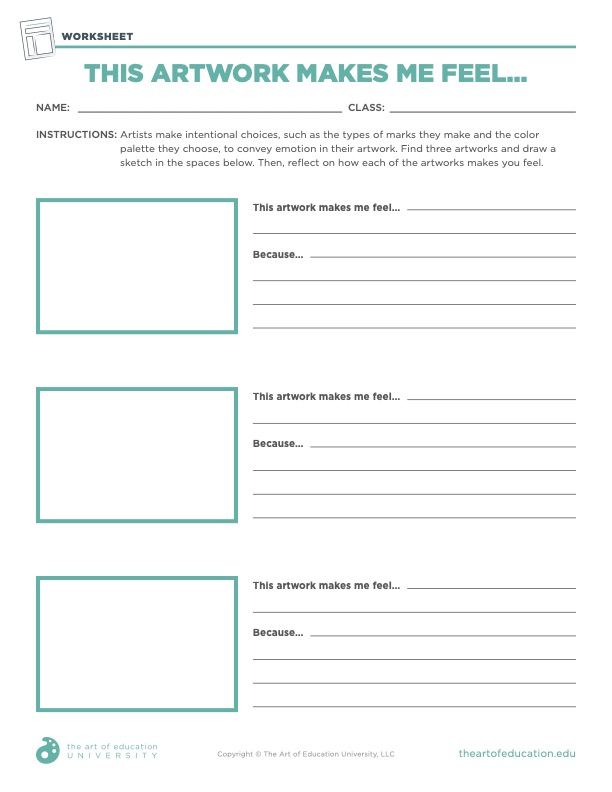
More extensions can include:
- Students stand up and copy poses they see in the artwork.
- Students act out what they would do if they were inside the painting.
- Students mimic sounds and noises they would hear if they were in the artwork.
- Students write a narrative story from the perspective of a character in the artwork.
- Students write a short paragraph about what happened before and another about what happened after the depicted scene.
- Read this article for more ways to incorporate the performing arts and physical movement.
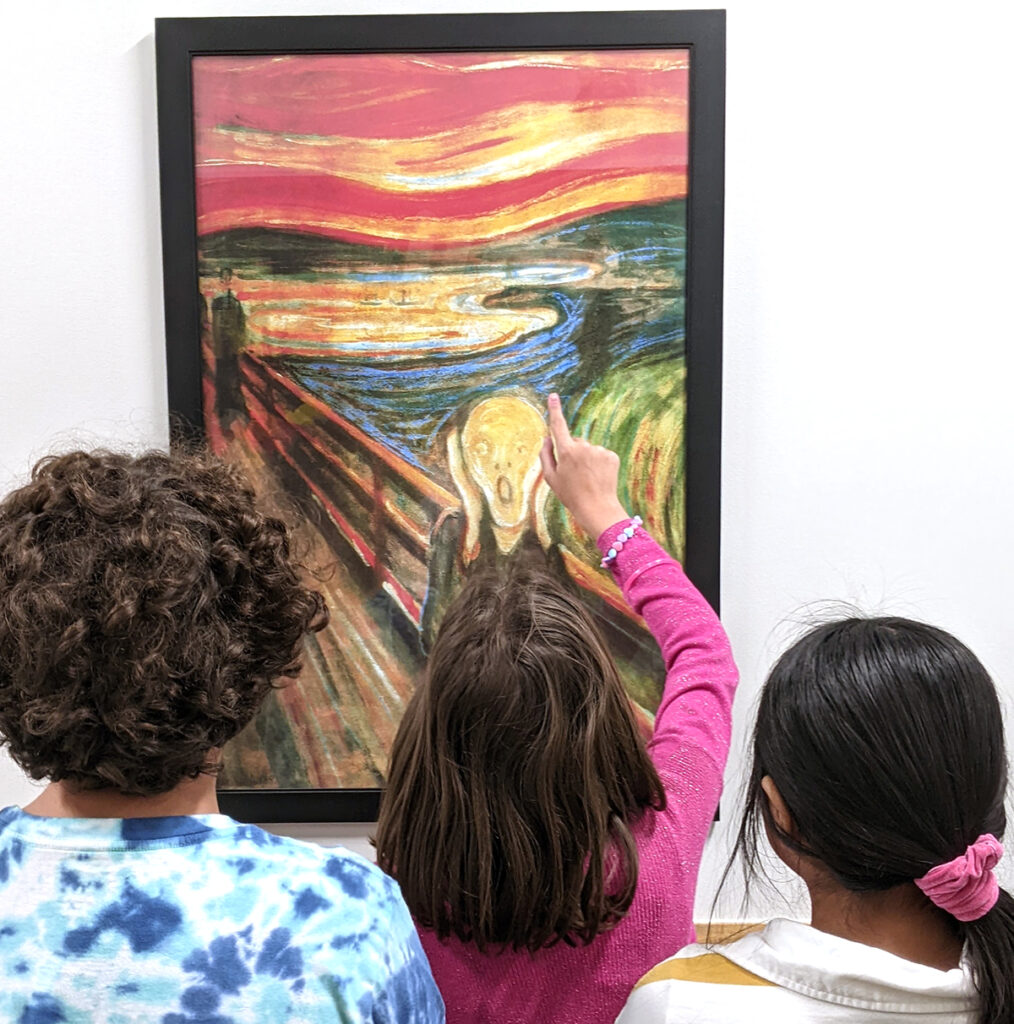
Jump into a painting using this fun activity and get your students to really examine artwork closely. With the help of this activity, you may notice your students will be able to recognize more works of art as the year progresses, and their ability to describe an artwork will improve. This activity is also a quick and simple way to integrate art history into your lessons.
Art inspires us to look closely and use our imagination. When we observe an artwork, we can find meaning and personal connection. This activity will help your students study paintings, find meaning in art, and therefore gain a deeper appreciation of famous works. Then, inspire your students to create their own artwork to tell a personal story using the Storytelling Through Art Pack in PRO Learning. The possibilities are limitless!
What narrative painting will you choose for this activity?
How can you extend this project for your students?
Magazine articles and podcasts are opinions of professional education contributors and do not necessarily represent the position of the Art of Education University (AOEU) or its academic offerings. Contributors use terms in the way they are most often talked about in the scope of their educational experiences.
